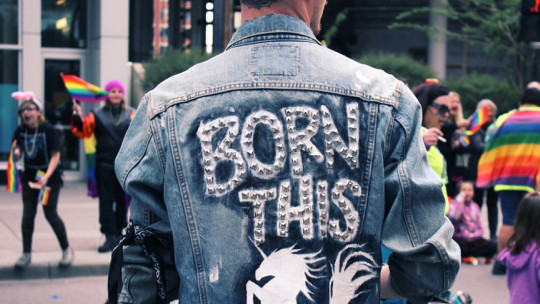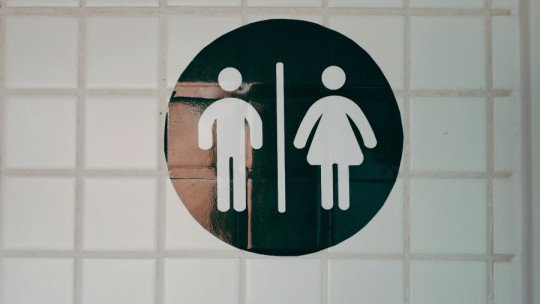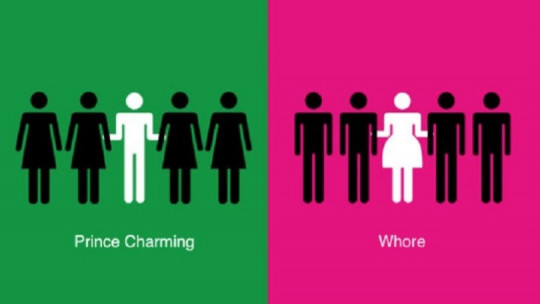
Gender roles are an element that has been talked about a lot in recent times and are becoming more and more important.
The tendency is to eliminate them so that there is no separation by gender in any type of task, but even so many of them can still be observed, especially in certain societies.
In the following paragraphs we will have the opportunity to see some examples of gender roles and the way in which they have influenced human societies.
What are gender roles?
Before we start listing different examples of gender roles, we must first stop for a moment to understand exactly what this concept means. Gender roles are unwritten rules in which a series of behaviors have historically been established as appropriate or appropriate for a certain gender while they were less likely to be observed on the contrary.
As we mentioned in the introduction, in recent years various sectors of society have used many efforts to identify many of these examples of gender roles and try to dilute them, so that the set of behaviors to which they refer would no longer be predefined. for a single gender and became plausible for any of them.
Likewise, some of them have also been identified that, instead of wanting to extend them to both genders, they prefer to suppress when referring to behaviors that are no longer accepted in today’s society, so they should disappear instead of being universalized between genders. . Later we will see different examples of gender roles.
One of the essential issues of gender roles is that they somehow mark what others expect from a person’s behavior in a certain situation depending on their gender. At least this was the case until a while ago, since we have already mentioned that the trend is towards the universalization or elimination of these behaviors
The basis of gender roles, therefore, is the belief that, depending on whether a person is male or female, they will have certain behaviors. The explanation of which part of the basis of these behaviors would be innate and which part is a mere social construct is the subject of intense debate and would give rise to countless investigations.
Therefore, we will not go any further and will go on to break down some of the examples of gender roles that will allow us to understand in greater depth the phenomenon that concerns us in this article.
Some examples of gender roles
Once we have taken a brief tour of the concept of gender role, we can go on to see some examples to be able to visualize the implications of this phenomenon.
It is important to remember that these examples of gender roles have been common in our society until a few years ago, but the trend suggests that we are on the way to eliminating or at least substantially modifying some of them, making them become roles independent of gender. .
1. Caring for children
One of the most frequent examples of gender roles is the one that has to do with caring for children. Traditionally, in our society there has been a tendency for this task, within marriage, to be assumed by the woman. On the contrary, what was expected of men was to work and earn a salary with which to support the family. The woman not only had to take care of the children, but also take care of the household chores
Of course, this photograph is long gone. Trends towards gender equality, with especially active policies for the incorporation of women into the workforce, have taken an important turn in this role.
Nowadays, it is common to find marriages in which both parents have their respective jobs and therefore also share the tasks related to the home and taking care of the children. In these cases, they usually resort to external help to be able to give the children the attention they need, whether through caregivers, nursery schools or with the invaluable help of family members, especially grandparents.
In any case, although this represents a change in trend, it does not mean that cases like the previous one do not continue to occur, and even vice versa, or with people of the same sex or being a single-parent family. It is evident that family models have also expanded which has also helped to reduce this first example of a gender role.
2. Emotional expressiveness
Another behavior that has traditionally been differentiated depending on whether the person was a man or a woman is that which has to do with the expression of emotions. Until some time ago, and even today, many people consider it okay for women to express their emotions openly, letting others know how they feel and even crying if they need to.
However, this same behavior, if coming from a man, has been less common. Traditional parenting styles have had a great impact on teaching children not to cry, that they are strong and that this behavior does not correspond to them. Of course, this trend is changing and today more and more parents are teaching their children that they should express what they feel and that there is no problem in crying.
This is one of the most important examples of gender roles, since it is based on learning that the boy or girl receives from their earliest childhood and that has tremendously relevant implications during adult life, since in the case of the child who If you have been educated not to express anything regarding your emotionality, you will have fewer tools to know how to manage these emotions when they overwhelm you.
3. The physical appearance
Of course, physical appearance is another example of gender roles that society has traditionally had and that have been changing for some time. Historically, many people expected women, just because they were women, to maintain an impeccable physical appearance using elements such as makeup, certain clothing items, cosmetics, hair removal, hairdressing, etc.
But precisely that of physical appearance is a role that has quickly become universal. More and more men are dedicating the same resources as women to taking care of their appearance. Both the sectors that promoted equality and the commercial brands themselves have been involved in this field, which have seen how they could reach the other 50% of the population, which was traditionally left out of their campaigns.
This does not mean that today everyone feels a social obligation to take extreme care of their physical appearance. It simply means that it is no longer a role assigned to women and therefore anyone can decide to maintain these behaviors, but they can also decide not to do so and therefore not worry excessively about the physical image projected to others.
4. Dominant character and conciliatory character
The type of character traditionally assigned to men and women is another of the most common examples of gender roles. Historically The idea has been promoted that men had certain tendencies toward leadership and dominance, while women, on the contrary, were more empathetic and more conciliatory In fact, we can already appreciate the interconnection with examples we have seen previously.
From that perspective, it was understood that it was easier for men to reach certain positions of responsibility, since their character implied a series of characteristics appropriate to perform those tasks. On the contrary, women were expected to remain in subordinate positions.
Furthermore, the first of the examples of gender roles that we saw implied that women could not even consider reaching those positions of responsibility, since motherhood was incompatible with developing a prosperous career. Nowadays, equality policies, such as equal maternity and paternity leave, mean that this gender role is gradually being diluted.
5. Types of studies
Also a distinction was made between the types of studies appropriate for a man and a woman stating that men had a greater propensity to enroll in careers in exact sciences and engineering, while women preferred the humanities, social sciences and disciplines of care for others (medicine, nursing or psychology).
Although the enrollment figures indicate that these trends are still maintained, free choice of career is encouraged, so today no man or woman has any impediment to opting to pursue the studies they have voluntarily chosen.








